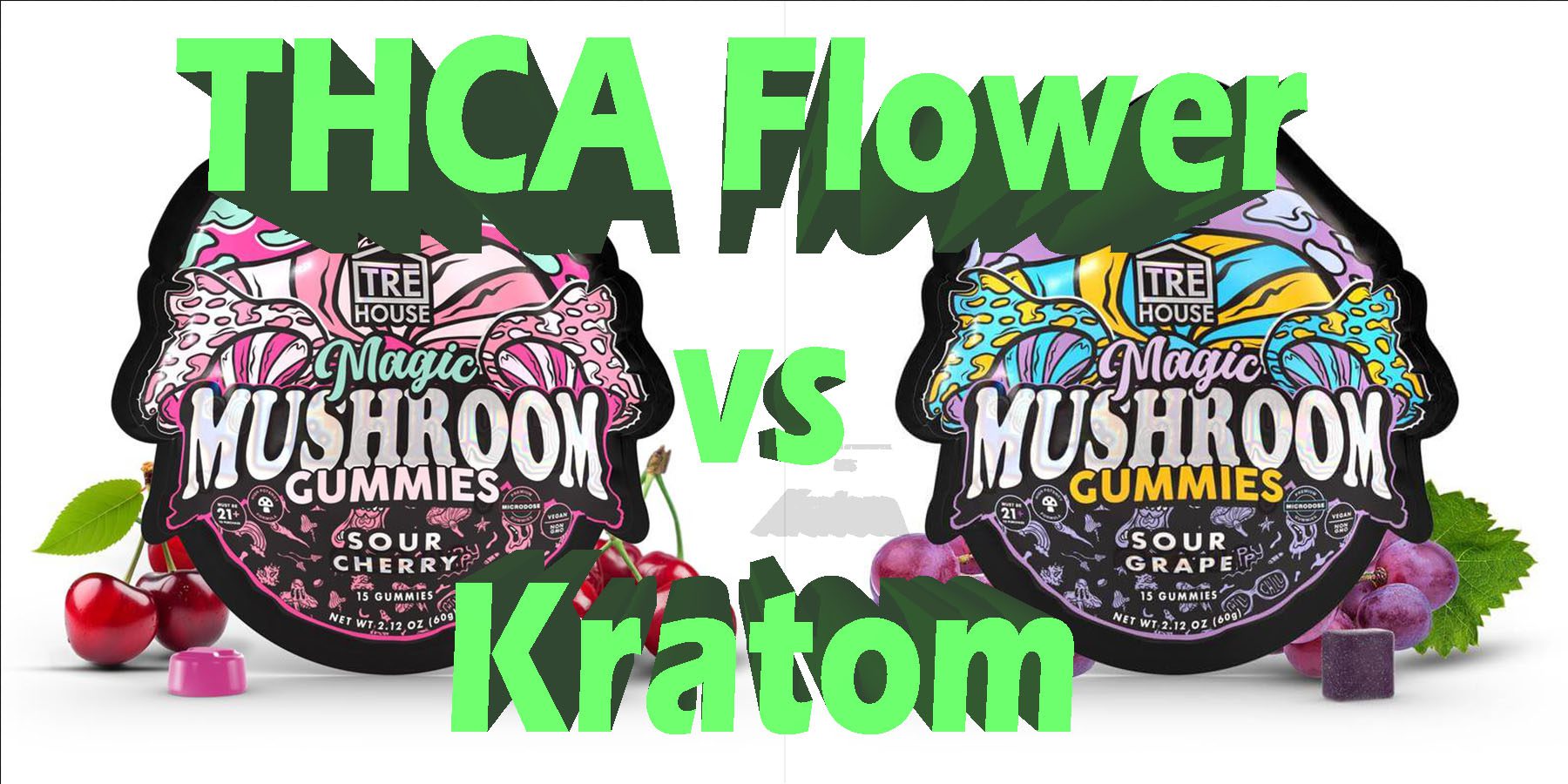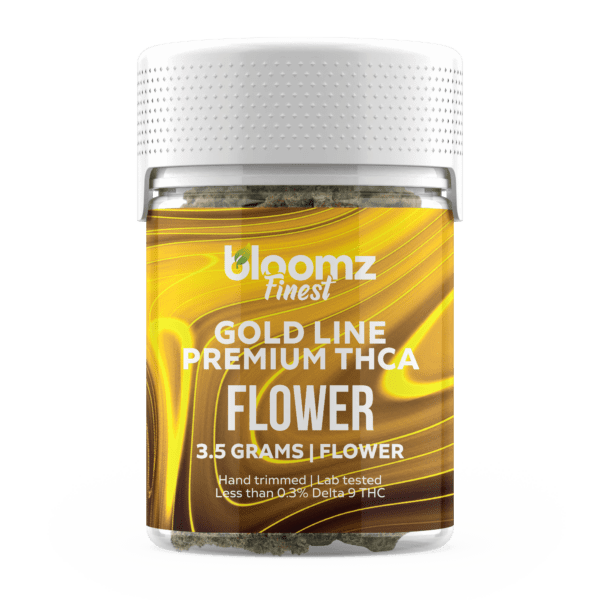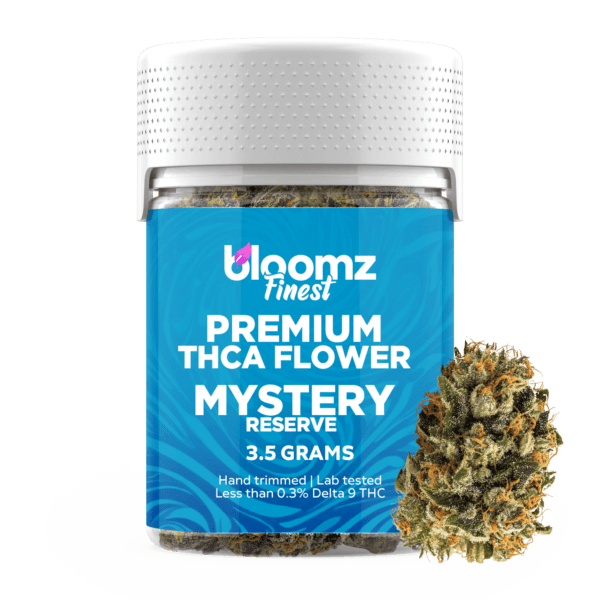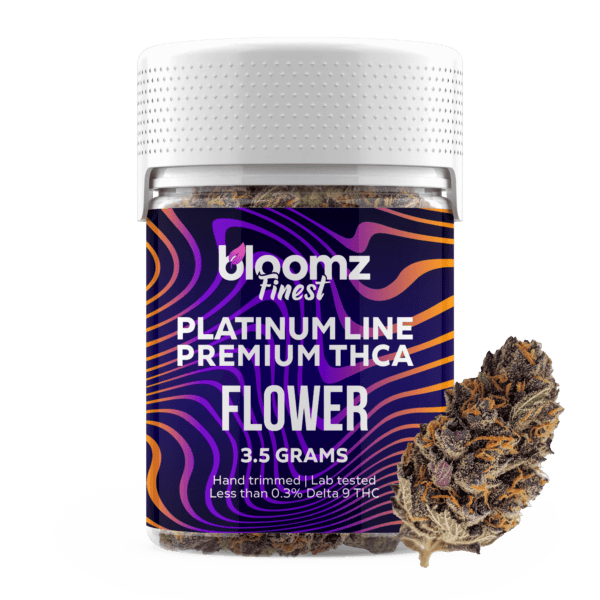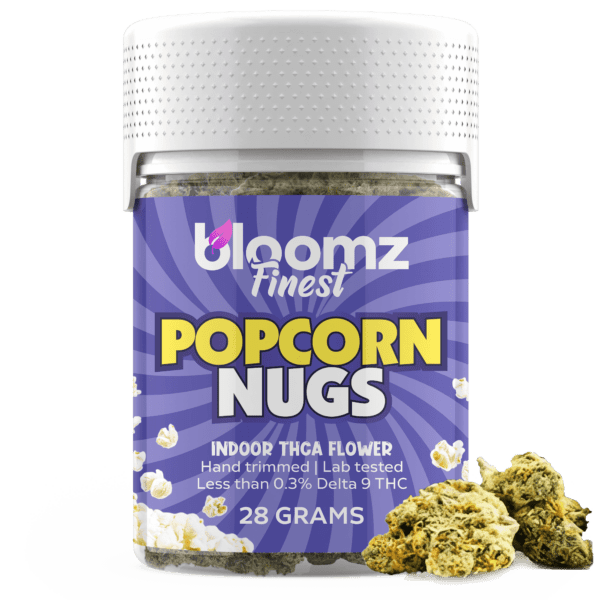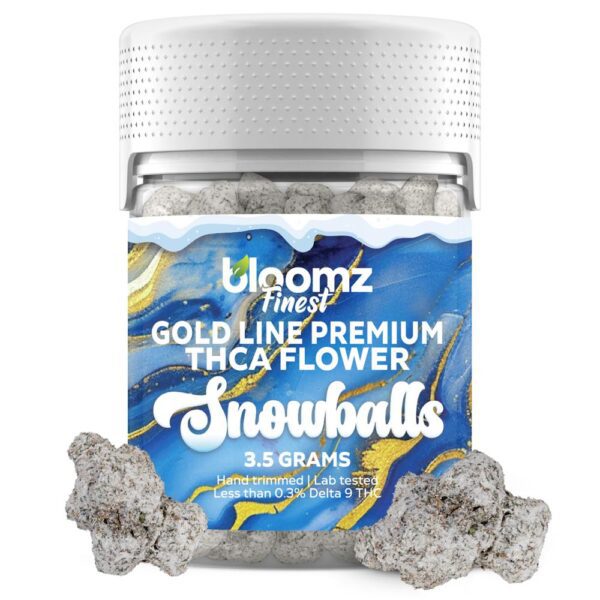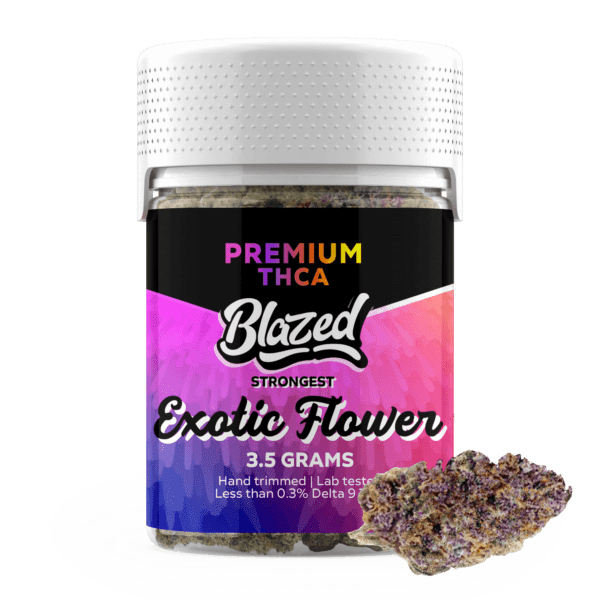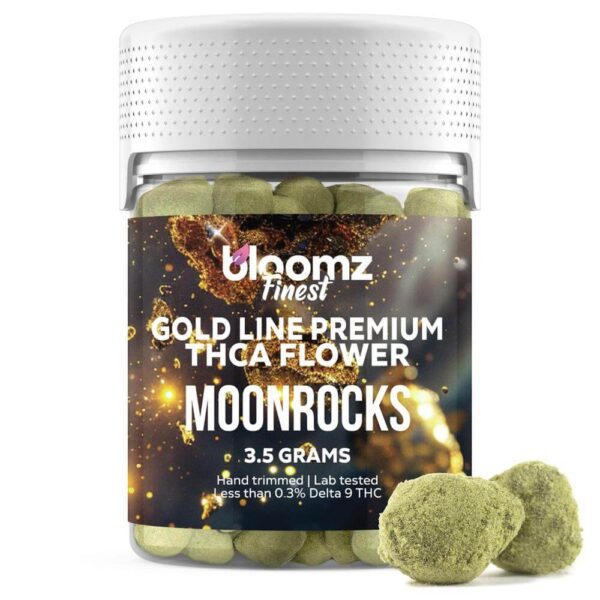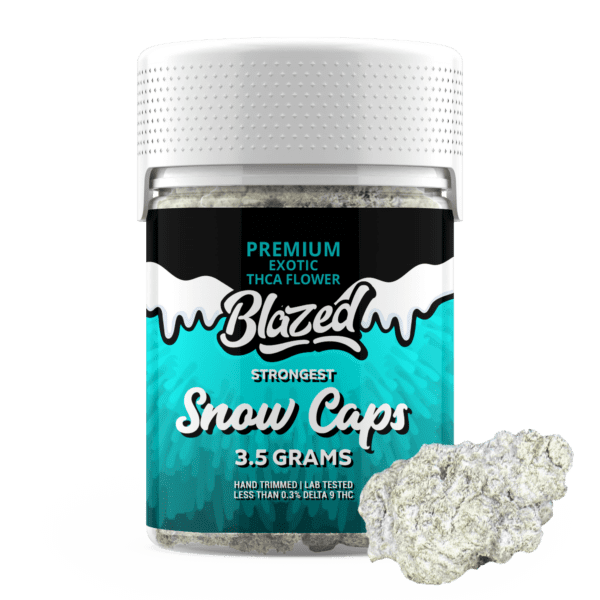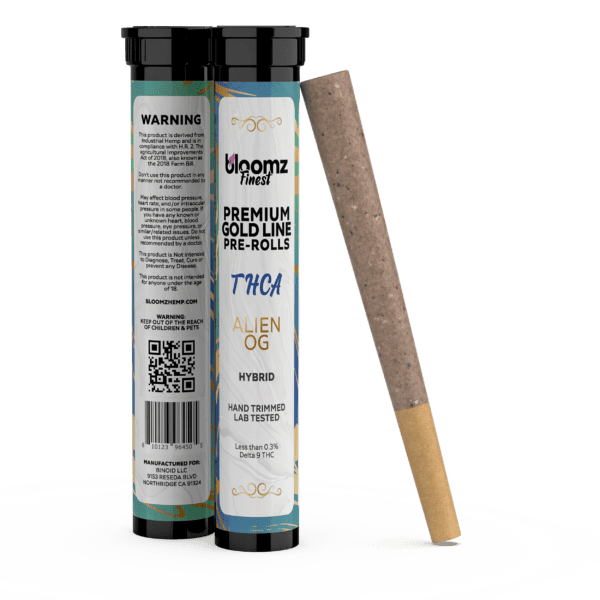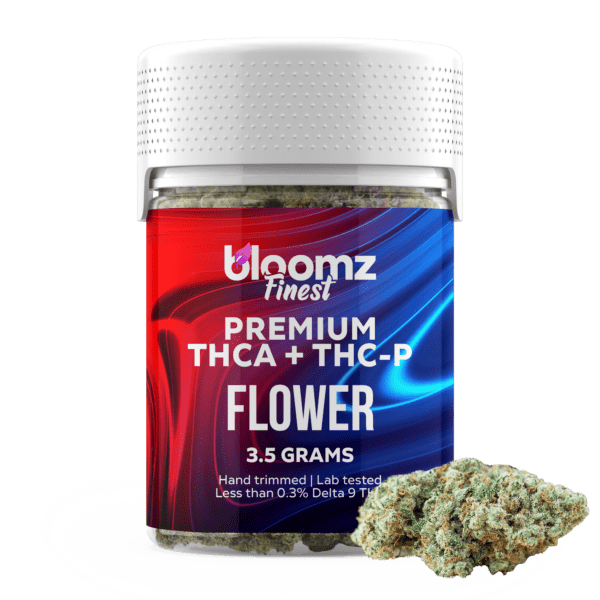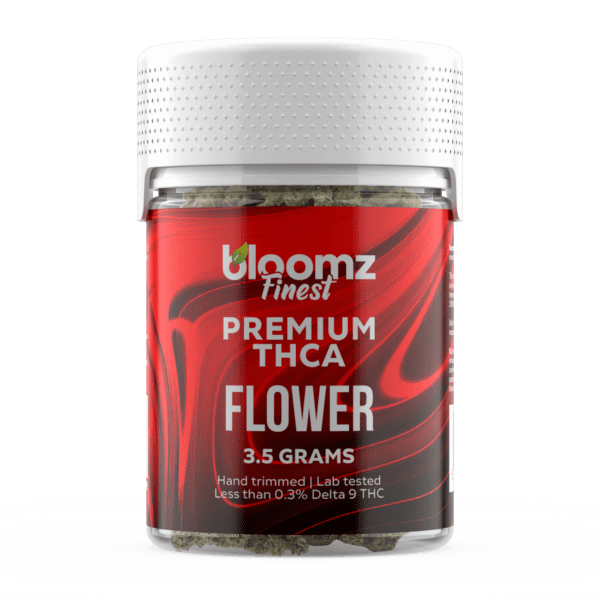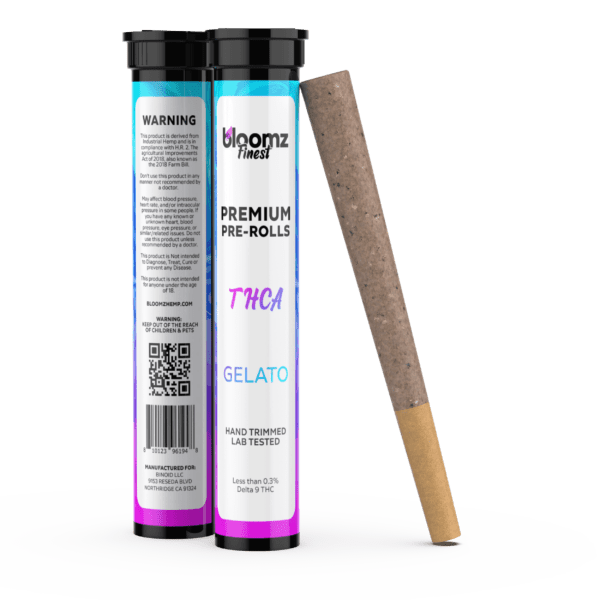The natural world has long offered humanity keys to unlock altered states of perception, from the aromatic smoke of ancient ceremonial plants to the enigmatic fungi emerging from the forest floor. In our modern era, marked by a burgeoning interest in natural alternatives and a re-evaluation of substances once relegated to the shadows, two distinct contenders have stepped into the spotlight, each promising a unique journey into the inner landscape. On one side, we find the meticulously cultivated and crystalline-dusted buds of THCA flower, a sophisticated product derived from the venerable cannabis plant, offering a familiar yet potent path to euphoria and relaxation.
On the other, the humble yet powerful “magic mushrooms“, specifically species containing psilocybin, beckon with the promise of profound introspection and kaleidoscopic visions, representing a lineage of use stretching back millennia. This fascinating comparison is not about declaring a victor, but rather about illuminating the vast chasm between their chemical actions, historical contexts, legal standings, and the deeply personal shifts in consciousness each can inspire. It’s an exploration into two distinct pathways of discovery, one rooted in botanical pleasure and the other in fungal profundity.
To Buy THCA Flower Click Here
Recommended products
-
THCA Flower – Indoor Exotics – Gold Line
$37.99$69.99 -
THCA Flower – Mystery Reserve
$41.99$79.99 -
THCA Flower – Platinum Line
$49.99$79.99 -
THCA Smalls
$149.99$256.99
Why It’s Important to Breakdown the Matchup of THCA Flower vs. Magic Mushrooms
In an increasingly open and curious marketplace for natural mind-altering substances, clear and accurate information is not just helpful; it is absolutely essential. The comparison of THCA flower and “magic mushrooms” is paramount. Why? Well, because these two categories of products, both capable of altering consciousness, do so through fundamentally different mechanisms, thus leading to vastly different experiences and carrying distinct considerations regarding safety, legality, and intent. To conflate them or to approach one with the expectations derived from the other would be a profound misunderstanding, potentially leading to discomfort, confusion, or even unintended consequences. This breakdown serves as a vital compass, guiding individuals through the nuanced terrain of their respective effects, ensuring that curiosity is met with clarity and preparation.
The most critical distinction lies in their core pharmacology and the resulting shifts in perception. THCA flower, when heated, delivers Delta 9 THC, which interacts primarily with the body’s endocannabinoid system, producing a range of effects often characterized by euphoria, relaxation, and heightened sensory experience. It’s a journey typically understood as a “high,” with varying degrees of intensity. Magic mushrooms, conversely, contain psilocybin and psilocin, which act as serotonin receptor agonists, inducing a profoundly different state of consciousness commonly referred to as a “trip.” This experience is characterized by intense visual and auditory alterations, deep introspection, ego dissolution, and often profound emotional and spiritual insights. The difference is not merely in strength, but in the entire architecture of the experience, demanding entirely different preparations, mindsets, and environments.
Furthermore, the legal and social implications of these two substances are worlds apart. THCA flower exists in a complex, often debated legal gray area, leveraging the 2018 Farm Bill’s definition of hemp. While offering a degree of accessibility, its status remains precarious and varies significantly by state. Magic mushrooms, on the other hand, are federally illegal in the United States, classified as Schedule I controlled substances. While some states and cities have moved towards decriminalization or medical access, the overarching legal framework is one of prohibition. This stark legal contrast dictates sourcing methods, potential legal risks, and the overall social acceptance of engaging with each substance, underscoring the critical need for consumers to understand these differences before making any choices.
Finally, this detailed comparison respects the unique cultural and historical legacies each substance carries. Cannabis, the source of THCA flower, has a multifaceted history as a medicine, sacrament, and recreational aid across countless civilizations, leading to its current mainstreaming. Magic mushrooms boast an even more ancient and profound history, deeply embedded in the spiritual practices and cosmologies of indigenous cultures across the globe for thousands of years, often viewed as sacred keys to other realms. Understanding these distinct tapestries of human interaction adds depth to the modern experience, transforming consumption from a simple act into a participation in a long and varied human story, demanding reverence for their respective powers.
Contender #1: THCA Flower
Emerging from the ever-evolving world of cannabis cultivation and science, THCA flower has rapidly carved out a significant niche for itself, representing a fascinating intersection of botanical tradition and modern legal frameworks. It stands as a testament to the ingenuity of growers and the intricate chemistry of the cannabis plant, offering an experience that is both timelessly familiar and refreshingly new. To the uninitiated eye, a bud of high-quality THCA flower is indistinguishable from its more restricted marijuana counterpart, boasting the same vibrant colors, complex aromas, and sparkling coat of crystalline trichomes.
This striking similarity is no coincidence; it is the result of meticulous breeding and cultivation practices aimed at maximizing one specific compound while adhering to a strict legal standard. THCA flower is not a synthetic product or a lesser version of a classic; it is a genuine, high-potency cannabis flower that operates within a unique legal space, making it one of the most talked-about and sought-after products in the modern hemp market. Its story is one of chemistry, legal interpretation, and the relentless pursuit of quality by a dedicated community of cultivators.
At its core, the phenomenon of THCA flower revolves around a single molecule: Tetrahydrocannabinolic acid (THCA) – a non-psychoactive acidic precursor to the famous Delta 9 THC. In the living cannabis plant, this is the primary form in which the cannabinoid exists. Think of THCA as Delta 9 THC in a dormant state, possessing a different molecular structure that includes an extra carboxyl ring. This additional ring prevents the molecule from binding effectively with the CB1 receptors in the brain, the interaction responsible for the intoxicating effects associated with cannabis. It is for this reason that consuming raw, unheated cannabis does not produce a significant psychoactive experience. The magic, as it were, lies in a process called decarboxylation. When THCA is exposed to heat—through smoking, vaping, or cooking—it loses that extra carboxyl ring and is converted into the psychoactive Delta 9 THC. This transformation is the entire basis upon which THCA flower’s effects are built, a simple chemical reaction that unlocks the plant’s full potential.
Recommended products
So, what exactly is THCA flower, and how is it produced to walk this fine legal line? THCA flower is cannabis flower, specifically cultivated from strains that are naturally high in THCA but extremely low in Delta 9 THC at the time of harvest. According to the 2018 Farm Bill, hemp is legally defined as a cannabis plant containing no more than 0.3% Delta 9 THC by dry weight. Savvy cultivators have leveraged this definition by breeding strains that produce vast quantities of THCA while keeping the Delta 9 THC levels below the legal threshold. The production process is a delicate art and science, requiring precision at every stage to ensure a high-quality, compliant final product:
Genetic Selection: The process begins with choosing the right genetics. Cultivators select cannabis strains known for their robust trichome production and high THCA potential. These are often iconic, high-potency strains that are carefully bred over generations to express the desired cannabinoid profile, specifically minimizing the natural degradation of THCA into Delta 9 THC while the plant is growing.
Controlled Cultivation: The plants are typically grown in highly controlled indoor or greenhouse environments. This allows growers to manage every variable—light cycles, temperature, humidity, and nutrients—to optimize the plant’s health and maximize trichome development. Stressing the plant in specific ways can encourage resin production, leading to higher concentrations of cannabinoids like THCA.
Precision Harvesting: The timing of the harvest is absolutely critical. Growers must harvest the plants at their peak maturity, just before the natural degradation process or exposure to environmental heat and light could convert a significant amount of THCA into Delta 9 THC, potentially pushing the flower over the legal 0.3% limit.
Careful Curing: After harvesting, the flower is carefully dried and cured. This is a slow process designed to remove moisture while preserving the delicate cannabinoids and terpenes. The curing environment is kept cool and dark to prevent premature decarboxylation and maintain the flower’s legal status, all while enhancing its aroma and flavor.
Compliance Testing: Before hitting the market, reputable brands send samples of their flower to third-party laboratories for comprehensive testing. This analysis confirms the flower’s cannabinoid profile, ensuring it is below the 0.3% Delta 9 THC threshold, and also screens for pesticides, heavy metals, and other contaminants, guaranteeing a safe and compliant product for the consumer.
The market for THCA flower is incredibly diverse, offering a wide spectrum of types and categories to suit every preference and budget. This variety reflects the maturity of the cannabis cultivation industry and the discerning tastes of consumers who look for specific qualities in their flower. From the environment it was grown in to the way it is processed and presented, each category offers a unique set of characteristics. Understanding these distinctions is key to navigating the options and finding the perfect product to match one’s desired experience, whether that’s the pinnacle of aromatic intensity or the simple convenience of a ready-to-use format.
The nuanced differences between them are what give the world of cannabis its incredible depth and variety, allowing users to find a strain that resonates perfectly with their personal chemistry and desired outcome:
Indica: Traditionally associated with plants originating from the Hindu Kush mountain region, Indica strains are known for their short, bushy stature and broad leaves. In terms of effects, they are renowned for producing a deeply relaxing and sedative experience, often referred to as a “body high.” The feelings are typically centered on physical sensations, promoting a sense of calm, comfort, and tranquility that can lead to a state of blissful repose. Terpenes commonly found in Indica strains, such as myrcene, are often associated with these calming and soothing effects. Users often choose Indica strains for evening use, to unwind after a long day, or to settle into a chilled-out, meditative state.
Sativa: Sativa strains typically originate in equatorial regions and are characterized by their tall, lanky plant structure and thin leaves. The experience associated with Sativas is often the polar opposite of Indicas. They are known for producing an energizing, uplifting, and cerebral effect, often described as a “head high.” This can manifest as a surge in creativity, focus, and sociability, making them a popular choice for daytime activities, creative projects, or social gatherings. Common terpenes in Sativas like limonene and pinene are often linked to these invigorating and mood-lifting qualities. The experience is typically more about mental stimulation than physical relaxation.
Hybrid: As the name suggests, Hybrid strains are the result of crossbreeding Indica and Sativa plants. They represent the vast majority of strains available on the market today and offer a balanced spectrum of effects that can be tailored to specific desires. Hybrids can be Indica-dominant, Sativa-dominant, or a true 50/50 mix. This allows cultivators to create strains that provide the best of both worlds—for example, a strain that offers a feeling of euphoria and mental clarity alongside a comfortable sense of body relaxation without being overly sedative. The specific effects of a hybrid depend entirely on its unique genetic parentage and resulting terpene profile, offering an almost endless variety of nuanced experiences.
THCA flower’s legality here in the U.S. is one of the most discussed and debated topics in the cannabinoid industry. Its existence is a direct result of the language used in the 2018 Agriculture Improvement Act, more commonly known as the 2018 Farm Bill. This landmark piece of legislation federally legalized the cultivation and sale of hemp, which it defined as the cannabis sativa L. plant with a Delta 9 THC concentration of not more than 0.3 percent on a dry weight basis. Critically, the law did not place a limit on the concentration of THCA. This omission created a legal loophole: as long as a cannabis flower contains less than 0.3% Delta 9 THC at the time of testing, it is legally considered hemp and can be sold in many states, regardless of its THCA content.
This allows consumers to purchase a product that is, for all intents and purposes, high-potency cannabis, as the THCA will readily convert to Delta 9 THC when heated. However, it is a legal gray area, and some states have enacted their own laws that use a “total THC” standard (calculating the potential Delta 9 THC from the THCA content), making THCA flower illegal in those jurisdictions. Therefore, while federally permissible under the current interpretation, its legality can vary significantly from state to state, and consumers must remain aware of their local regulations.
The purposes for using THCA flower are as diverse as its strains, with consumption methods that allow for a range of experiences and levels of intensity. The choice of method often comes down to personal preference, desired onset time, and the specific tools available. Each technique interacts with the flower differently, particularly in how it applies the heat necessary for decarboxylation, which in turn influences the flavor, smoothness, and overall character of the experience. From traditional methods that have been used for centuries to modern technological advancements, users have a variety of ways to engage with this versatile plant.
Vaping (using a portable or desktop vaporizer): Vaping has become an increasingly popular method for consuming cannabis flower. A vaporizer heats the THCA flower to a precise temperature, hot enough to decarboxylate the THCA into Delta 9 THC and vaporize the cannabinoids and terpenes, but not hot enough to cause combustion. This process avoids the creation of smoke and many of the harsh byproducts associated with burning plant material. The result is a smoother, cleaner, and more flavorful experience that allows the user to taste the nuanced terpene profile of the strain. Vaporizers also offer a high degree of efficiency and control, as different compounds vaporize at different temperatures, allowing for a more tailored session.
Smoking: This is the most traditional and widely recognized method of cannabis consumption. It involves the direct combustion of the plant material, inhaling the resulting smoke. Common methods include rolling the ground flower into a joint (in a paper) or blunt (in a hemp or tobacco wrap), or packing it into the bowl of a pipe, bong, or bubbler. Smoking provides a rapid onset of effects and a ritualistic experience that many users enjoy. The high heat of combustion ensures a full and instantaneous conversion of THCA to Delta 9 THC, delivering a potent and immediate effect.
Cooking/Baking: THCA flower can also be used to create a wide variety of edibles, from brownies and cookies to savory dishes and infused oils. This method requires a crucial first step: decarboxylation. Before infusing it into a recipe, the flower must be heated at a low temperature in an oven for a period of time (e.g., 240°F for 30-40 minutes) to convert the THCA into Delta 9 THC. Once decarboxylated, the flower can be infused into a fat source like butter or oil, which is then used in the recipe. Edibles produce a much more potent and long-lasting effect than inhalation methods because the THC is processed by the liver, which converts it into an even more powerful compound called 11-hydroxy-THC. The onset is much slower (30 minutes to 2 hours), but the experience can last for many hours.
The effects of using THCA flower are, ultimately, the effects of Delta 9 THC, as the conversion is the entire point of consumption for most users. Once the heat is applied and the transformation occurs, the resulting Delta 9 THC interacts with the body’s endocannabinoid system (ECS), primarily binding to the CB1 receptors in the brain and nervous system. This interaction is what produces the well-known suite of psychoactive effects associated with cannabis. Users can expect a significant shift in consciousness and perception, often characterized by a profound sense of euphoria and an uplifted mood.
Thoughts may become more creative and expansive, and there is often a heightened appreciation for sensory inputs like music, food, and art. On the physical side, a deep sense of relaxation and bodily comfort is common, particularly with Indica-dominant strains. The experience is multifaceted, capable of inspiring introspection, social connection, or serene contentment, all depending on the strain, dosage, individual’s mindset, and surrounding environment.
Pros & Cons
When evaluating THCA flower, it’s beneficial to look at its profile through a balanced lens, acknowledging both the compelling advantages that have driven its popularity and the potential drawbacks that warrant consideration. This balanced perspective is crucial for any potential user to make an informed decision that aligns with their lifestyle, legal situation, and personal preferences. The product’s unique position in the market creates a specific set of pros and cons that differentiate it from other cannabis and hemp-derived products.
Pros:
Federal Legal Accessibility: The most significant advantage of THCA flower is its legal status under the 2018 Farm Bill. By containing less than 0.3% Delta 9 THC, it is classified as hemp, allowing it to be legally shipped to and sold in many states where recreational cannabis is not yet legal. This provides a pathway for individuals in those regions to access high-potency cannabis flower through a legally recognized channel, opening up a world of possibilities that were previously unavailable to them without violating state laws.
A Familiar and Authentic Experience: For those who appreciate the classic cannabis experience, THCA flower delivers in spades. Because it converts directly into Delta 9 THC upon heating, the effects are virtually identical to those of traditional marijuana. This is not a synthetic cannabinoid or a different analogue with subtly altered effects; it is the real deal, providing the authentic aroma, taste, and psychoactive journey that cannabis is known for, ensuring users receive the genuine experience they are seeking without any guesswork.
Expansive Strain and Product Variety: The THCA flower market is a direct beneficiary of decades of sophisticated cannabis breeding. This means consumers have access to an enormous library of legendary and exotic strains, each with its own unique terpene profile and nuanced effects. From classic Indicas and Sativas to a near-infinite array of complex Hybrids, the level of choice is staggering. This allows users to fine-tune their experience with incredible precision, selecting a strain that perfectly matches their desired mood or activity.
Control Over Psychoactive Activation: The two-stage nature of THCA offers a unique form of control. In its raw, unheated state, the flower is non-psychoactive and is being explored for its own set of properties. A user could, for instance, juice raw cannabis leaves for their potential wellness benefits without any intoxicating effects. The psychoactivity is entirely dependent on the user’s choice to apply heat through smoking, vaping, or cooking, giving them complete and direct control over when and if they wish to activate the flower’s potent potential.
Diverse Consumption Methods: THCA flower is incredibly versatile, lending itself to a wide range of consumption methods that cater to every possible preference. Whether one enjoys the classic ritual of smoking a joint, the clean and flavorful experience of vaping, the discretion and convenience of packing a one-hitter, or the long-lasting journey provided by homemade edibles, THCA flower can do it all. This adaptability ensures that virtually anyone can find a method of consumption that they are comfortable and familiar with.
Rich and Complex Terpene Profiles: Reputable growers of THCA flower place a heavy emphasis on preserving the plant’s natural terpenes, the aromatic compounds responsible for its distinct flavors and smells. These terpenes do more than just provide a pleasant sensory experience; they also contribute to the “entourage effect,” working synergistically with cannabinoids to modulate and enhance the overall experience. A high-quality THCA flower will offer a complex bouquet of aromas, from pine and citrus to berry and diesel, which is a hallmark of a well-cultivated and carefully cured product.
Established Industry Standards and Testing: Because it operates within the legal hemp industry, the THCA flower market benefits from a growing infrastructure of accountability. Reputable brands provide comprehensive third-party lab reports, known as Certificates of Analysis (COAs), for their products. These reports verify the cannabinoid potency, confirm legal compliance, and screen for harmful contaminants like pesticides, heavy metals, and molds, offering consumers a level of transparency and safety assurance that is crucial for peace of mind.
Rapid Onset of Effects via Inhalation: When THCA flower is smoked or vaped, the effects are felt almost instantaneously, typically within minutes. This rapid onset allows users to carefully manage their experience by taking a small amount and waiting to see how they feel before consuming more. This immediate feedback loop makes it much easier to find the right dosage and avoid the common pitfall of overconsumption, which can sometimes happen with the delayed onset of edibles.
Social and Communal Aspect: Cannabis has a long and storied history as a social lubricant, and THCA flower continues this tradition. The rituals associated with its consumption—sharing a joint among friends, gathering around a table to pack a bowl, or simply enjoying a relaxed conversation in an altered state—are deeply ingrained in cultural practice. It can serve as a catalyst for bonding, laughter, and shared experiences, fostering a sense of community and connection among users in a way that is both timeless and profound.
Potential for Precise Dosing with Technology: The advent of sophisticated dry herb vaporizers has brought a new level of precision to consuming flower. Many modern vaporizers allow for exact temperature control, which can be used to target specific cannabinoids and terpenes that vaporize at different boiling points. This technological advancement allows discerning users to experiment with temperature settings to subtly alter the effects of their flower, potentially emphasizing certain desirable qualities while minimizing others, offering a highly customizable and repeatable experience.
Cons:
Complicated and Shifting Legal Landscape: The primary disadvantage of THCA flower is the precarious nature of its legality. While it may be federally compliant under the 2018 Farm Bill’s definition of hemp, many states have taken a different view, implementing “total THC” laws that effectively ban the product. This creates a confusing patchwork of regulations that can change rapidly, placing the onus on the consumer to constantly stay informed about their local laws. There is also the risk that a future federal ruling or legislative change could close the loophole that allows it to exist.
Risk of Overconsumption and Intense Effects: Because THCA flower converts into potent Delta 9 THC, there is a significant risk of overconsumption, especially for novice users or those with a low tolerance. The experience can be intensely psychoactive, and taking too much can lead to feelings of unease, paranoia, or overwhelming physical sensations. The sheer potency of modern, high-THCA strains requires a responsible and cautious approach, starting with a very small amount and waiting to assess the effects before consuming more.
Distinct and Pungent Aroma: While cannabis connoisseurs may cherish the strong, skunky, or fruity aroma of high-quality flower, this same quality makes it far from discreet. The smell of burning or even fresh THCA flower is potent and easily recognizable, which can be a major drawback for individuals who need to be mindful of their neighbors, live in shared housing, or simply wish to keep their consumption private. This lack of discretion can limit the situations in which it can be comfortably used.
Misleading Product Labeling and Quality Variance: In a rapidly growing and not-yet-fully-regulated market, the quality and accuracy of THCA flower products can vary wildly between vendors. Less scrupulous companies might misrepresent the potency of their flower, use outdated lab reports, or sell poorly grown and cured products. It is crucial for consumers to do their due diligence, purchasing only from highly reputable brands that provide transparent, up-to-date, and comprehensive third-party lab testing to ensure they are getting a safe and accurately labeled product.
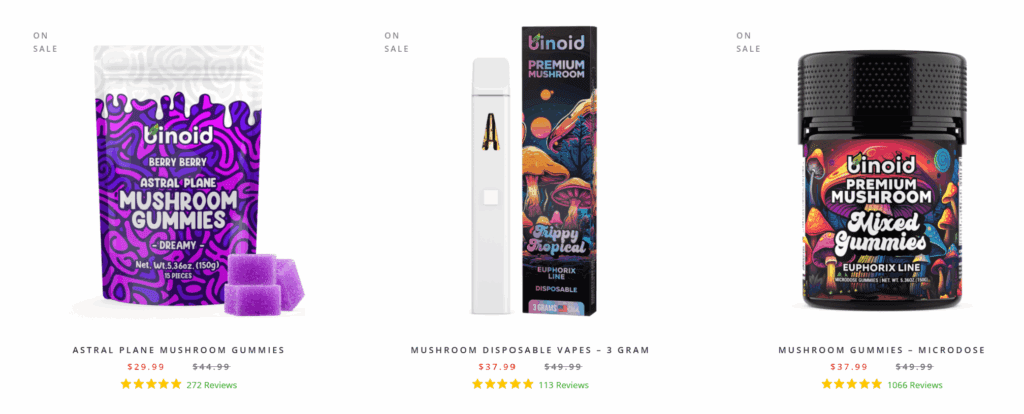
Contender #2: Magic Mushrooms
Emerging from the earth, often in the most unassuming and humble of forms, “magic mushrooms“—primarily species from the Psilocybe genus—are fungi that have held a profound and revered grip on human consciousness for millennia. Far from being a mere recreational curiosity, these organisms have been venerated as sacred entheogens (substances that “generate the divine within”), spiritual guides, and powerful keys to unlocking the hidden dimensions of the mind across diverse cultures and throughout the annals of human history.
Their modest appearance, often just small, brown fungi, stands in stark contrast to the immense and vibrant inner cosmos they are capable of revealing. Their story is one intertwined with ancient shamanism, modern scientific inquiry, and a global reawakening to their potential for profound personal exploration, insight, and a fundamental re-framing of one’s perception of self and the universe. They are not simply about “seeing things”; they represent a pathway to experiencing reality in a profoundly different way.
The term “magic mushrooms” refers to a polyphyletic group of fungi that contain psilocybin and psilocin. Psilocybin is the primary psychoactive compound, but it is actually a prodrug. Once ingested, the body metabolizes psilocybin into psilocin, which is the compound directly responsible for the profound psychedelic effects. Psilocin primarily acts as a partial agonist at serotonin 5-HT2A receptors in the brain. This interaction is believed to lead to a significant increase in functional connectivity across brain networks that are normally quite segregated, effectively allowing different parts of the brain to communicate more freely.
This widespread communication is thought to be the basis for many of the characteristic psychedelic effects, such including intensified emotions, vivid sensory distortions, synesthesia (mixing of senses), and a powerful sense of unity or spiritual connection. Unlike cannabis, which modulates existing brain functions, psilocin acts more like a reset button, temporarily disrupting established patterns of thought and perception.
The history of “magic mushrooms” is as rich and ancient as human civilization itself, stretching back thousands of years and spanning continents. Archaeological evidence, such as mushroom iconography found in ancient rock art in the Sahara Desert dating back 7,000 to 9,000 years, suggests their use in spiritual and ceremonial contexts is deeply prehistoric. Cultures in Mesoamerica, particularly the Aztec and Mayan civilizations, revered psilocybin-containing mushrooms, which they called “teonanácatl” (flesh of the gods). These mushrooms were integral to their religious rituals, divination, and healing practices, believed to facilitate communication with deities and provide profound insights.
Their use was documented by Spanish chroniclers in the 16th century, though subsequently suppressed by the conquering Europeans. In modern history, the Western world was largely reintroduced to “magic mushrooms” in the 1950s through the work of mycologist R. Gordon Wasson, who documented his experience with psilocybin mushrooms among the Mazatec people of Oaxaca, Mexico, and brought the story to Life magazine. This marked the beginning of modern scientific and cultural interest, leading to a period of intense research in the 1960s, followed by prohibition, and now a resurgence of scientific and public interest in the 21st century.
The ways in which magic mushrooms can be consumed have evolved beyond simply eating dried caps, reflecting both a desire for convenience and attempts to mask their often earthy or bitter taste. While the raw or dried form remains the most traditional, modern ingenuity has led to the development of various product types, particularly in regions where decriminalization or legal frameworks are emerging. These products aim to offer a more palatable and sometimes more precisely dosed experience, making the profound effects of psilocybin accessible to a broader audience while still demanding the same respect for their inherent power:
Powder: Dried magic mushrooms can be ground into a fine powder. This form is particularly versatile, as it can be easily encapsulated, mixed into beverages (like “lemon tek” for faster onset), or incorporated into food items. Grinding the mushrooms helps to create a more homogeneous product, which can lead to more consistent dosing compared to eating whole, variably sized pieces. However, the strong taste can still be noticeable when mixed into liquids or certain foods.
Edibles: This is one of the most popular modern forms, especially where magic mushrooms are decriminalized or legally available. Manufacturers extract the psilocybin and psilocin and infuse them into various edible products like gummies, chocolates, or other confections. These edibles not only completely mask the mushroom’s taste but also offer the significant advantage of precise, pre-measured dosing, making the experience more predictable and approachable for users who might be intimidated by whole mushrooms.
Disposable Vapes: This is a very new and still highly experimental category, with limited scientific research. Some products claim to contain synthetic psilocin or other psychoactive compounds extracted from mushrooms that can be vaporized. However, the efficacy, safety, and long-term effects of inhaling these compounds are largely unknown, and this method is not widely recognized or supported by the established psychedelic community. Extreme caution is warranted, and this is generally not a recommended method of consumption.
Tinctures: Tinctures involve extracting the active compounds of magic mushrooms into a liquid, typically alcohol. These concentrated liquids are then administered sublingually (under the tongue) using a dropper, allowing for relatively rapid absorption into the bloodstream. Tinctures offer a high degree of dosage control and can be a more discreet method of consumption, though the taste can still be strong for some users.
Capsules: For those who prioritize discretion and taste-free consumption, capsules are an ideal choice. They contain precisely measured amounts of dried, ground mushroom powder or an extracted psilocybin/psilocin compound. Capsules offer the ultimate convenience and ensure consistent dosing without any of the mushroom’s natural flavor, making them popular for micro-dosing or for those who simply prefer a straightforward method of ingestion.
Recommended products
The concept of combining “magic mushrooms” with cannabinoids and even live terpenes is an emerging area of interest for those seeking to fine-tune the psychedelic experience. While the core effects of psilocybin are profound on their own, other compounds can potentially modulate the journey. For instance, some users might combine psilocybin with CBD, hoping that the non-intoxicating cannabinoid could help to ground the experience, smooth out potential feelings of overwhelm, or contribute to a sense of calm during the introspective process.
The addition of Delta 8 THC might be considered by those looking to introduce a gentler, more relaxing body sensation or a mild layer of euphoria to complement the mental aspects of the psilocybin. Live terpenes, extracted from cannabis or other aromatic plants, could theoretically be introduced not only for flavor but also to potentially steer the mood or “vibe” of the trip through their own aromatic and subtle physiological effects, leveraging the concept of the entourage effect, although rigorous scientific study on these specific combinations is still in its nascent stages.
The current legality of “magic mushrooms” in the United States stands in stark contrast to that of THCA flower. Federally, psilocybin and psilocin are classified as Schedule I controlled substances under the Controlled Substances Act. This means they are deemed to have a high potential for abuse and no currently accepted medical use, making their cultivation, possession, and sale illegal nationwide. However, the legal landscape is slowly but significantly shifting. Several cities, including Denver, Oakland, Santa Cruz, and Ann Arbor, have decriminalized psilocybin, making its possession the lowest law enforcement priority.
Furthermore, the state of Oregon has legalized psilocybin for supervised therapeutic use within a regulated framework, and Colorado has followed suit. Other states are exploring similar paths, moving towards decriminalization or controlled medical access. Despite these progressive local and state-level changes, the federal prohibition remains firmly in place, creating a complex and evolving legal environment where federal and local laws can be in direct conflict, making understanding one’s specific local jurisdiction absolutely critical.
The overall effects of magic mushrooms are profoundly psychedelic, offering a vastly different and more immersive kind of altered state compared to the relatively lucid high of Delta 8 THC flower. The experience, or “trip,” typically begins within 30-60 minutes of ingestion and unfolds over 4 to 8 hours, often in distinct phases. The initial “come-up” can be characterized by physical sensations, sometimes including nausea or a “body load,” as perception begins to shift. At the “peak,” the user is fully immersed in the psychedelic state, which is marked by a significant alteration of sensory input. Colors may appear more brilliant, surfaces may seem to breathe or flow, and intricate geometric patterns can manifest, especially with closed eyes.
The user’s internal landscape is equally transformed; thought processes become more fluid and associative, often leading to profound and unexpected insights. Emotions are amplified, and a user may experience everything from overwhelming bliss and awe to deep introspection and the processing of difficult memories. A hallmark of a strong experience is “ego dissolution,” a temporary loss of the sense of a separate self, leading to a powerful feeling of being interconnected with everything. The entire journey is deeply subjective and profoundly influenced by one’s mindset (“set”) and physical environment (“setting”), making preparation and intention key components of the experience.
Pros & Cons
Delving into the world of magic mushrooms reveals a complex interplay of potential benefits and significant challenges. Their profound effects, ancient history, and contentious legal status create a unique profile that demands careful consideration. Weighing these pros and cons is essential for anyone contemplating an encounter with these powerful fungi, ensuring a journey undertaken with deep respect and thorough understanding.
Pros:
Profound Psychedelic Experiences: For individuals seeking deep introspection, spiritual exploration, or profound shifts in perspective, magic mushrooms offer a uniquely powerful psychedelic journey. They can facilitate intense emotional releases, vivid visual and auditory alterations, and a profound sense of interconnectedness, often leading to what users describe as life-changing insights.
Potential for Deep Personal Exploration: Unlike the more recreational effects of Delta 8 THC, magic mushrooms are often approached with an intention for serious self-exploration. Their capacity to temporarily dissolve ego boundaries and alter habitual thought patterns can provide individuals with a fresh perspective on their lives, relationships, and place in the world, fostering a sense of wonder.
Rich Historical and Cultural Significance: Engaging with magic mushrooms connects one to an unbroken lineage of human interaction with these fungi, stretching back millennia. Their use in ancient shamanic and spiritual practices across various cultures imbues them with a deep historical weight and cultural reverence, making the experience feel part of a timeless tradition.
Natural Origin: For those who prioritize natural substances, magic mushrooms are a product of the earth, growing organically without the need for lab-based conversions or infusions. This natural purity is appealing to users who seek an unadulterated botanical experience, untainted by industrial processes.
Long-Lasting Effects: The effects of magic mushrooms typically last for several hours, providing an extended period for introspection and exploration. This longer duration allows for a more immersive experience compared to the shorter-acting effects of many inhaled cannabis products, which can be advantageous for intentional, structured sessions.
Unique Alteration of Perception: Magic mushrooms create a distinct altered state of consciousness that is qualitatively different from the effects of cannabinoids. They engage different neural pathways, leading to a unique sensory and cognitive experience that can be highly novel and stimulating for those seeking new forms of perception beyond the familiar.
Growing Decriminalization Movement: While federally illegal, a burgeoning movement for decriminalization and regulated access for therapeutic use is gaining traction in various cities and states. This evolving landscape reflects a growing societal recognition of their potential value and may offer more pathways for legal engagement in the future, providing a glimmer of hope for broader access.
Cons:
Federal Illegality: The most significant and immediate drawback is the federal Schedule I classification of psilocybin and psilocin. This means that possession, cultivation, and sale are illegal under federal law, carrying substantial legal risks including fines and imprisonment, despite some local decriminalization efforts.
Intense and Potentially Overwhelming Experience: Magic mushrooms can induce profoundly intense and sometimes challenging experiences. While often insightful, these can include periods of anxiety, confusion, or fear, particularly at higher doses or in uncontrolled environments. The intensity can be overwhelming for some, leading to what is commonly referred to as a “difficult trip.”
Unpredictable Dosage and Potency: The potency of magic mushrooms can vary significantly from strain to strain, batch to batch, and even within different parts of the same mushroom. This inherent variability makes accurate dosing difficult, especially when consuming raw or unprocessed mushrooms, increasing the risk of an unintendedly intense experience.
Risk of Misidentification: In nature, many species of wild mushrooms are deadly poisonous. Misidentifying a magic mushroom for a toxic one can have fatal consequences. This inherent risk makes foraging for magic mushrooms extremely dangerous for untrained individuals and underscores the importance of sourcing from trusted, knowledgeable channels, though this itself carries legal risk.
How to Go About Choosing Which Option
The decision between THCA flower and “magic mushrooms” represents a fundamental fork in the road for anyone exploring altered states of consciousness. These are not two sides of the same coin; they are currency from entirely different economies of perception. The choice hinges not on which is inherently “better,” but on a deeply personal evaluation of your intentions, your desired depth of experience, your tolerance for unpredictability, and your understanding of their respective legal and safety profiles. Approaching this decision with clarity and respect for the unique nature of each substance is paramount for a safe and meaningful journey.
First and foremost, articulate your intentions. Are you seeking a familiar, pleasant, and largely recreational experience characterized by euphoria, relaxation, heightened senses, and perhaps a touch of creative flow? If so, THCA flower is the clear choice. Its effects are generally manageable, predictable within strain types, and well-suited for social enjoyment, unwinding, or mild self-exploration. Alternatively, if your intention is to delve into the deepest recesses of your mind, to confront profound questions, to experience a radical shift in perspective, or to seek spiritual insight, then “magic mushrooms” align more closely with those powerful and potentially transformative goals. Their effects are profoundly immersive and introspective, less about pleasure and more about insight.
Next, consider your comfort level with intensity and unpredictability. THCA flower, while potent, typically offers a controllable and relatively linear experience. You can often predict the general trajectory of the high based on strain and dosage. Magic mushrooms, however, are renowned for their unpredictable and often overwhelming nature. The “trip” can take unexpected turns, presenting challenging emotions or intense sensory input. This requires a level of mental fortitude, preparation, and a willingness to surrender to the experience that is not necessary with THCA flower. If you prefer a gentle hand, THCA flower is your companion; if you seek a cosmic roller coaster, be prepared for what mushrooms can offer.
Finally, the legal landscape and sourcing considerations are non-negotiable. THCA flower, thanks to the Farm Bill, often operates in a legally ambiguous but commercially accessible space, typically with third-party lab testing. Magic mushrooms, being federally illegal, involve significant legal risks if sourced outside of specific decriminalized or medically legal jurisdictions. The quality and safety of magic mushroom products in illicit markets can also be highly variable and dangerous. This means your access, safety, and comfort with legal risks will heavily influence your practical ability to choose one over the other.
|
Feature |
THCA Flower |
Magic Mushrooms |
|---|---|---|
|
Primary Compound |
THCA (converts to psychoactive Delta 9 THC with heat) |
Psilocybin (converts to psychoactive Psilocin) |
|
Mechanism of Action |
Cannabinoid (CB1 Receptor Agonist) |
Serotonin 5-HT2A Receptor Agonist |
|
Typical Experience |
Euphoric, relaxing, creative, psychoactive “high,” sensory enhancement |
Profoundly psychedelic, introspective, visual/auditory distortions, ego dissolution, spiritual insight |
|
Federal Legal Status |
Legal under 2018 Farm Bill if <0.3% Delta 9 THC (a legal gray area) |
Schedule I Controlled Substance (Federally Illegal) |
|
State Legality |
Varies widely; illegal in states with “Total THC” laws. |
Decriminalized or medically legal in some cities/states; otherwise illegal. |
|
Primary Risks |
Legal ambiguity, overconsumption leading to intense psychoactive effects. |
Legal prosecution, psychologically challenging experiences, unpredictable intensity, “bad trips.” |
|
Potency |
High (in terms of THC conversion) |
Can be extremely potent, highly variable by species and dose. |
|
Target User |
Adults of all experience levels (with cautious dosing for novices). |
Experienced users or beginners with careful preparation and guidance for strong doses. |
|
Use Case |
Socializing, relaxation, creative flow, recreation, mild self-exploration. |
Deep introspection, spiritual exploration, seeking profound insights. |
|
Predictability |
Relatively high and predictable based on strain and dose. |
Highly variable and often unpredictable. |
Beyond the Veil: Choosing Your Path to Perception
The profound offerings of both THCA flower and magic mushrooms invite us to consider the vast spectrum of consciousness that nature provides. Each is a unique key, designed to unlock a different door within the mind. The vibrant, comforting embrace of cannabis, now accessible through THCA flower, offers a familiar yet exhilarating journey into euphoria and heightened sensory pleasure, grounding you in a rich appreciation of the present moment. In stark contrast, the ancient, enigmatic power of magic mushrooms pulls you into a deep, often challenging, yet potentially transformative descent into the self, promising not merely pleasure, but profound revelation and a complete re-framing of reality.
To choose between them is to choose not just an experience, but a philosophy of exploration itself, a deliberate step into the specific kind of altered perception you are truly seeking.
To Buy THCA Flower Click Here
Recommended products
-
Exotic THCA Pre-Rolls Gold Line – 3-Pack/6 Pack
$36.99$69.99 -
THCA Flower
$27.99$79.99

